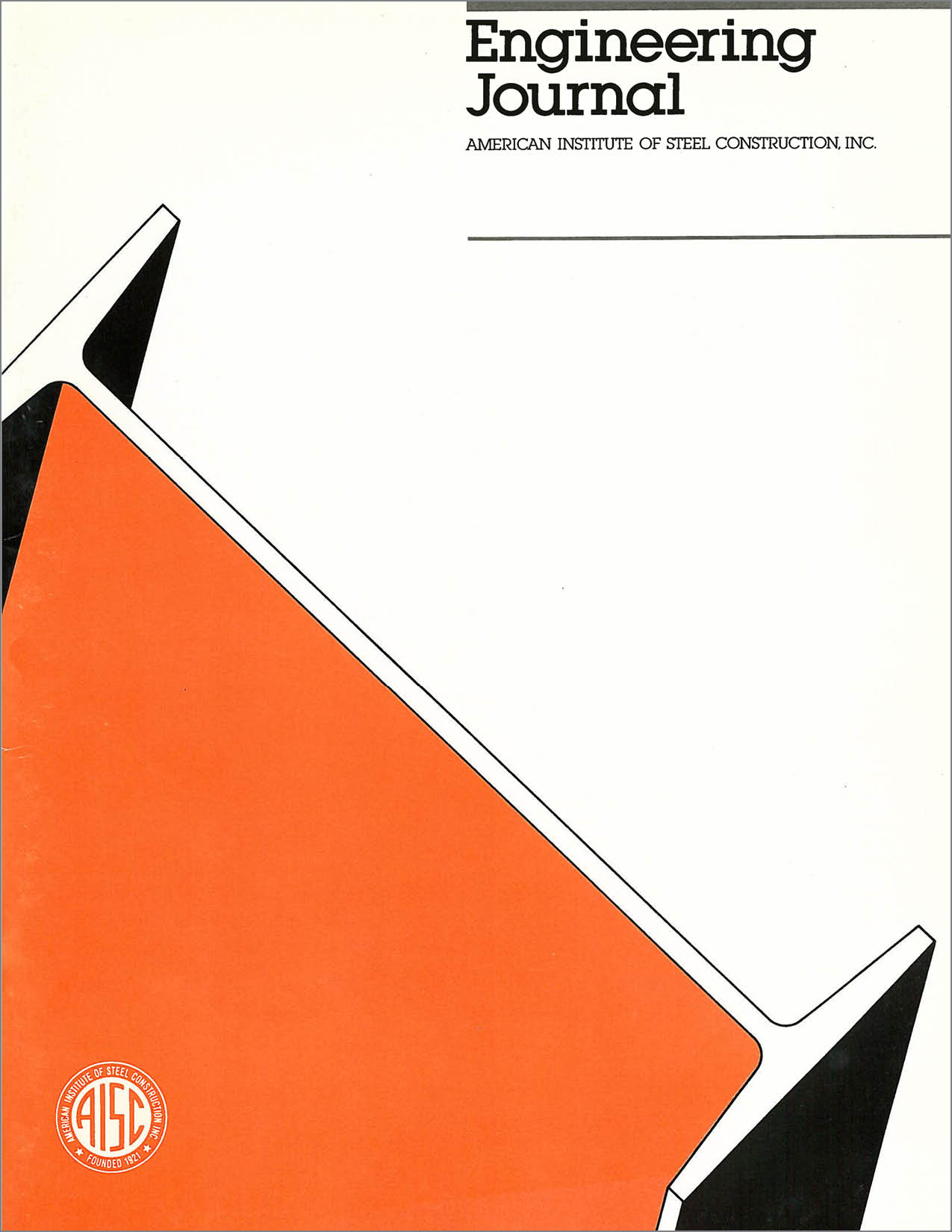Behavior of Semi-rigid Composite Connections
DOI:
https://doi.org/10.62913/engj.v24i2.487Abstract
The 1978 AISC Specification allows three types of framing. Type 1 is for fully rigid moment connections, Type 2 is for pinned connections (although the moment capacity inherent in these connections is recognized and assumed to act in resistance of wind loads), and Type 3 is for semi-rigid connections. The behavior of a composite connection is similar to that of a non-composite connection, with the slab steel replacing the top angle. The higher strength of the rebar steel, the increased moment arm and the presence of a slab result in a stronger, stiffer and more ductile system. The substitution of the angle with the rebar also results in a much more linear initial behavior. The moment-rotation curves are fairly linear within the range that should be used for service loads, and thus serviceability checks might not be as difficult as previously thought. For design purposes, the connection can probably be considered linear with a stiffness similar to those obtained at the beginning of GL3, if shakedown can be assumed to have taken place during GL2. Thus the use of a complex approach, requiring B-splines or polynomials to approximate the moment-rotation characteristics, might not be required for everyday office use.

